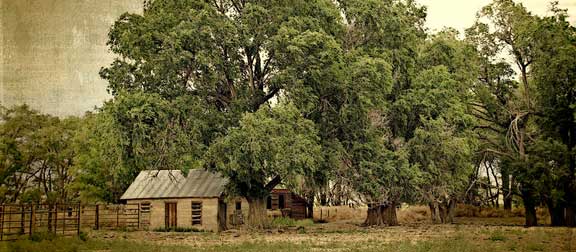by Ceil Damschroder
After the Revolutionary War, some of the 20 State Land States, (the 13 original colonies plus 7) ceded their westward sections of land to the Federal Government. The Federal Government then had lots of land and very little money. It was determined that the land should be surveyed and sold or given as a reward for military service.
Land was measured from the intersections of base lines and meridian lines. Here in Colorado, our land is measured from the base line that runs east-west through Boulder, (Base Line Road). The meridian runs north-south through Nebraska and Kansas.
Townships run North or South from the base line and Ranges run East and West from the meridian. A township was measured into grids of 36 sq. miles, called a section. Sections are numbered 1 through 36 beginning at the NE corner running west and wrapping around at each end. Each section contains 640 acres. A quarter section of 160 acres was the most common amount of acres awarded for a homestead.
To locate land records, visit the county court house where your people lived or the LDS Library in Salt Lake or a branch library to order the Grantee Index on microfilm. To find the exact land your ancestors lived on, you’ll need a map that shows townships, ranges and sections. An example of a land description might read: SE ¼ of the NE ¼ of section 14, township 7 N, Range 69 W. That would be close to the CSU Oval. Search for free homestead records from the Bureau of Land Management website: www.glorecords.blm.gov/.
~ Ceil Damschroder is past president and a retired professional researcher with the Larimer County Genealogical Society. Visit lcgsco.org or on Facebook facebook.com/lcgsco for more info and monthly events.
Photo Credit: Wikimedia Commons, commons.wikimedia.org

